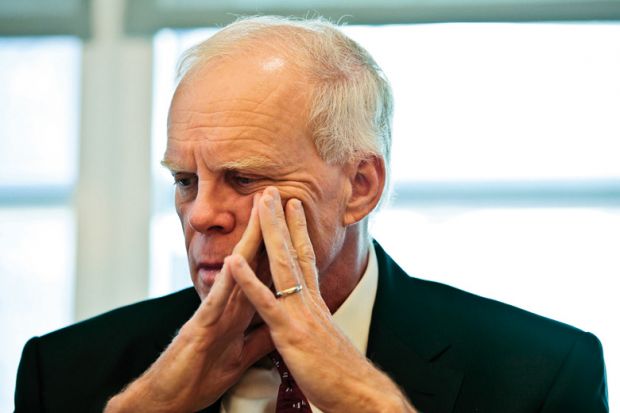The outgoing president of Stanford University has questioned the effectiveness of global university alliances – a move that has been hailed by other leaders as the “next big thing” in higher education.
In an interview with Times Higher Education, John Hennessy, who will stand down as president of the Californian institution this summer, said “it’s hard enough” to achieve collaboration within “your own institution”.
Last month, King’s College London, the US’ Arizona State University and Australia’s University of New South Wales launched a global alliance aimed at tackling sustainability and educational attainment. When asked whether such a partnership would be attractive to Stanford and more common in the future, Professor Hennessy said: “We haven’t pursued anything like that.”
He added: “We’ve done some collaborations with Berkeley and UCSF [the University of California, San Francisco], but we find even those distances challenging enough to really get something going. So I worry how significant collaborations which are even more distant can be given the challenges of having people that far apart.”
His comments come just a week after Sir Nigel Thrift, former vice-chancellor of the University of Warwick and executive director of the Schwarzman Scholars programme, told THE that these collaborations would be the “next big thing” in higher education and would become “the normal model”.
Ed Byrne, president and principal of King’s College London, also predicted that this type of partnership would increasingly develop.
Professor Hennessy added that memoranda of understanding between universities are “useless unless the faculty really want to collaborate”.
“We tend to think of the research partnerships we pursue as driven primarily by faculty-to-faculty interaction,” he said.
He said that student exchanges could be “terrific ways to create interaction between institutions and give students a possibility to live in a different culture”, adding that Stanford’s study-abroad programme with the University of Oxford is its “most popular overseas study programme”.
When asked whether he had any regrets during his 16 years heading Stanford, he cited his failed attempt to open a New York City campus. In 2011, the city’s then-mayor Michael Bloomberg launched a competition for a university to build a campus in New York. Stanford submitted a proposal for an applied sciences and engineering graduate school, but then withdrew its application.
Professor Hennessy said that “New York City politics” meant that the proposal would not work, but he suggested that the plan might kick off “at some point in the future”.
He described Stanford’s idea as “bold” and “quite unique” in that there would have been “full interchangeability” of staff and students at the two campuses. Staff and students would have been able to choose at which campus to be based each year, and there would have been one department for computer science, with five academics on the East Coast and 25 academics on the West Coast.
He said that it would be vital to ensure that academics at each campus were of the same calibre.
“That’s the hard thing to achieve but the right way to do it,” he said.
“We didn’t want to build something where there was an A campus and a B campus. I still think that’s an interesting experiment to try to do.”




